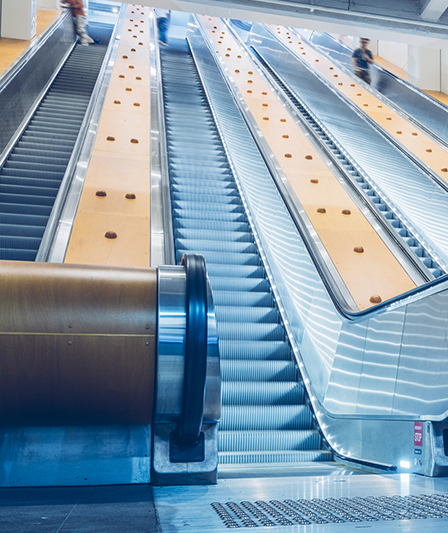
The escalator or moving walkway void in-fill is the area between the moving handrail and balustrade.
Void in-fill areas are not load-rated and the construction materials used to fill the void are often not designed or built to support loads, including the weight of a person.
People who access the void in-fill area to clean and maintain the space or retrieve dropped items put themselves at risk of falling and sustaining serious injuries.
Designers, architects and engineers must also ensure the buildings or structures they design are safe and free of risks to the health and safety of the people who work there, as far as reasonably practicable.
Control measures
The PCBU with management or control of the space must ensure the escalator or moving walkway void in-fill is safe and does not pose a risk to health and safety. A PCBU must mitigate any risks with appropriate control measures.
Interim control measures
Interim control measures carry risk and must only be considered as a temporary solution while permanent control measures are put in place.
Interim control measures include:
- removing void in-fills
- installing signs warning people not to access the area
- instructing people performing work in or near void in-fills to consider other options, such as using long-handled equipment.
Permanent control measures
Permanent control measures include:
- undertaking a load rating assessment to ensure it is appropriate for any likely tasks such as cleaning
- strengthening void in-fills so they can support a load
- use professional services such as a structural engineer to modify or reinforce existing structures
- fitting anti-climbing devices and anti-slide access restrictions
- these must be regularly inspected and maintained
- increasing the height of balustrades to minimise the possibility of people climbing over them and accessing void in-fill areas.


